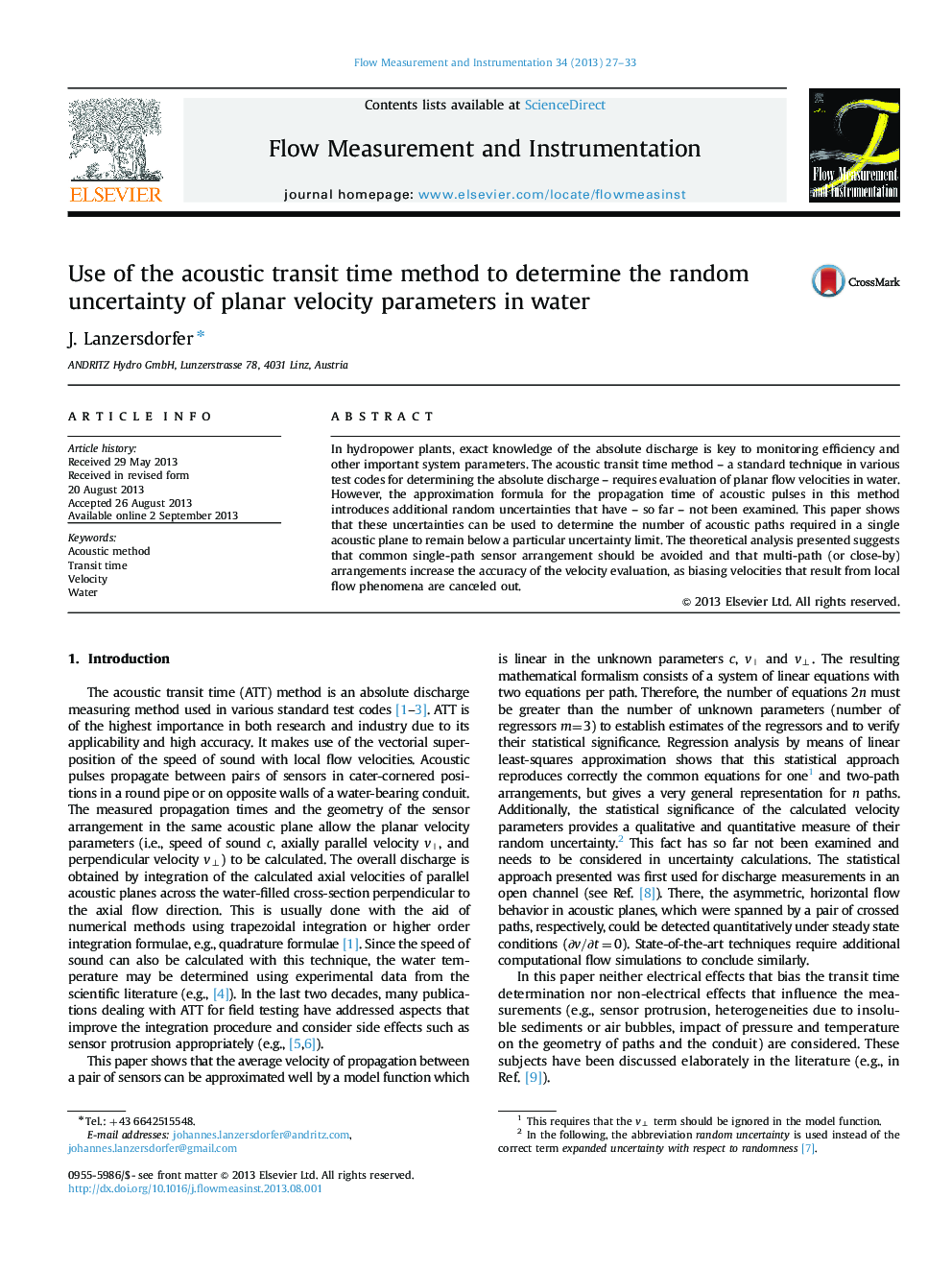| کد مقاله | کد نشریه | سال انتشار | مقاله انگلیسی | نسخه تمام متن |
|---|---|---|---|---|
| 708455 | 1461103 | 2013 | 7 صفحه PDF | دانلود رایگان |

• A general formulation of the velocity evaluation for any path number per acoustic plane is proposed.
• The random uncertainties of velocity parameters can only be reduced by increasing the number of paths.
• The single-path arrangement should be avoided for absolute discharge measurements.
• A symmetric two-path arrangement shows lowest random uncertainty under an inclination angle of 45°.
• Close-by arrangements are preferred in the presence of local flow anomalies.
In hydropower plants, exact knowledge of the absolute discharge is key to monitoring efficiency and other important system parameters. The acoustic transit time method – a standard technique in various test codes for determining the absolute discharge – requires evaluation of planar flow velocities in water. However, the approximation formula for the propagation time of acoustic pulses in this method introduces additional random uncertainties that have – so far – not been examined. This paper shows that these uncertainties can be used to determine the number of acoustic paths required in a single acoustic plane to remain below a particular uncertainty limit. The theoretical analysis presented suggests that common single-path sensor arrangement should be avoided and that multi-path (or close-by) arrangements increase the accuracy of the velocity evaluation, as biasing velocities that result from local flow phenomena are canceled out.
Journal: Flow Measurement and Instrumentation - Volume 34, December 2013, Pages 27–33